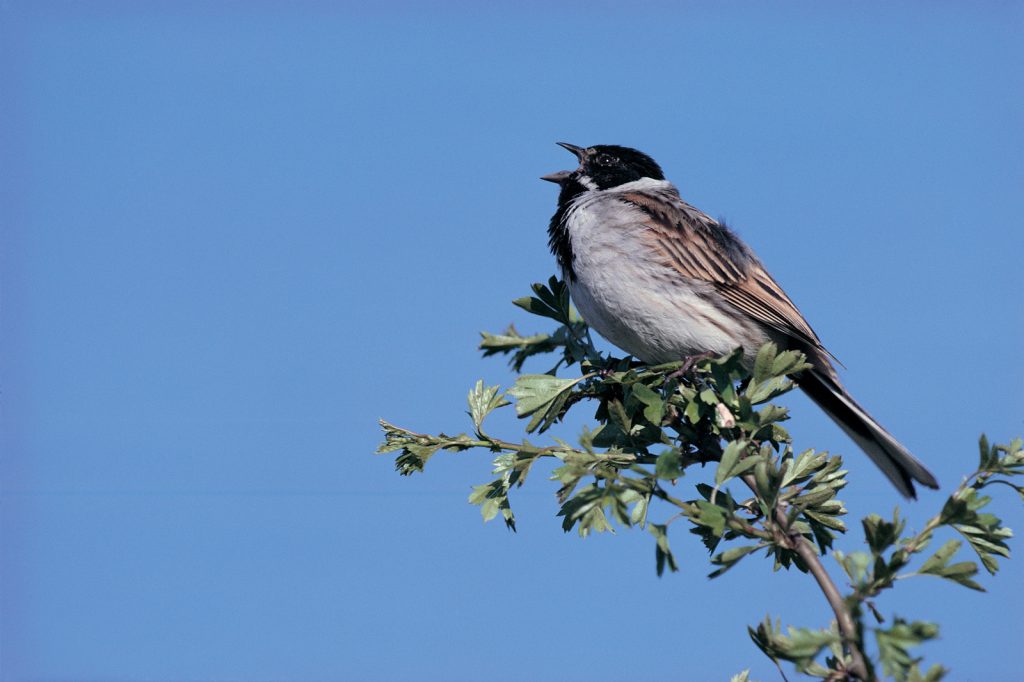A reduction in the area of arable land farmed in Northern Ireland has been blamed for a decline in seed-eating birds in the region over the last decade.
The State of the UK’s Birds 2020 (SUKB) combines the latest results from bird surveys and monitoring studies. This report covers the whole of the UK and collates data from surveys and helps to put this monitoring and the fortunes of Northern Ireland’s birds into context with the rest of the UK.
This year’s report highlights the poor fortunes of seed-eating birds and some of the geese and diving duck species that spend the winter in Northern Ireland.
Linnets (pictured top), lesser redpolls and reed buntings declined by 52%, 53% and 23% respectively, between 2008 and 2018.
It’s in contrast with positive trends for the species in other parts of the UK.
For linnets and reed buntings, the report suggested the decline in Northern Ireland may be linked to the small and declining area of arable farmland, which provides food for these species over the crucial winter period.
Anne-Marie McDevitt, head of species at RSPB NI, said: “It’s alarming to note the declines in some of our seed-eating birds, geese and ducks in Northern Ireland.
“Species are vital indicators of the health of our environment, and it is the role of government bodies and environmental NGOs to ensure that we safeguard our highest priority species and keep our common species common.”
Results from the Wetland Bird Survey show that since 2000 there has been a large decline in numbers of wintering diving ducks in Northern Ireland, principally at Lough Neagh.
Changes in migratory patterns may play a role in these declines. However, the declines also coincide with a known decrease in the availability of food for these ducks in the lough.
Greenfinches – formerly a common sight at garden birdfeeders – have been disappearing from Northern Ireland. Their numbers are down 82% over a 23-year period.
Trichomonosis threat
The main driver of the fall in the population is thought to be the disease trichomonosis, which is believed to have first emerged in finch populations following spill-over from woodpigeons.
Experts say there is no cure for the disease, but it is possible to lower transmission risk at garden feeding stations by disinfecting bird feeders and bird tables regularly.
If sick birds persist, feeding should be stopped for at least three weeks before starting again.
Need for more data in Northern Ireland
The report also reveals that less is known about bird species trends in Northern Ireland than in other parts of the UK, due to the lower coverage of survey schemes.
Anne-Marie McDevitt added: “To know how our species are faring we need good data. We are indebted to the volunteers who collect the valuable data that made this report possible.
“However, we need an even larger and stronger network of bird survey volunteers across Northern Ireland to allow better monitoring of those less common species, and identification of problems before it is too late.”
Wetland Bird Survey data also indicates that numbers of light-bellied brent geese from the Canadian Arctic population, for which Northern Ireland is a major wintering and staging area, have continued their recent decline, although the long-term trend remains positive.
Neil McCulloch, an ornithologist at the Northern Ireland Environment Agency (NIEA), commented: “The Antrim Hills, recognised as an important upland landscape for priority species in Northern Ireland, has been designated as a Special Protection Area (SPA) for hen harriers and merlins and is the largest remaining stronghold for curlew in Northern Ireland.
“Hen harriers have declined by over 20% across NI since the designation, with declines of close to 80% in the Antrim Hills, but a habitat management plan is now being drawn up to turn around these declines.
“Curlews, which have undergone catastrophic declines of over 80% between 1987 and 2013, are now stabilising in the Antrim Hills, as a result of targeted conservation efforts carried out by landowners and environmental NGOs supported by DAERA [Department of Agriculture, Environment and Rural Affairs] and the NIEA.
Further efforts are planned, including the possible extension of the existing SPA to allow curlew to be added as a feature, reflecting the importance of this area for the species.
The report contains good news for some species, though. For example, the numbers of Icelandic-breeding whooper swans wintering in Northern Ireland have maintained their long-term increase. There has been a significant increase in some garden birds, including blackcaps, collared doves and goldfinches – up by 151%, 49% and 22% respectively in Northern Ireland between 2008 and 2018.
For the UK as a whole, the woodland bird indicator shows a long-term decline of 27% since the early 1970s, with declines of 7% over just the last five years.
The report also highlights an overall decline in native bird numbers, with 19 million fewer pairs of breeding birds in the UK compared to the late 1960s. House sparrows have been hit the hardest; there are 10.7 million fewer pairs than in 1966.


